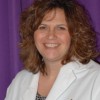Soy fresh, soy clean: Using aseptic technique for food safety
Lessons
# Student lab preparation
Students learn the difference between cleaning and sanitizing, then practice lab skills by creating agar plates that will serve them throughout the unit.
Files
# Student lab station monitoring
Students monitor their lab station, and determine the quantity of microorganisms that survive on their lab stations.
Files
# Bio-based cleaners
Students determine how effective bio-based cleaners are in killing common bacteria.
Files
# How bio-based cleaners work
Students observe how various bio-based cleaners work by attacking proteins. Students then create their own experiment to determine the effectiveness of bio-based cleaners on lipids.
Files
Teacher background
Foodborne diseases are a significant public health burden that are largely preventable. The FDA Food Safety Modernization Act (FSMA), signed into law by President Obama on Jan. 4, 2011, enables FDA to better protect public health by strengthening the food safety system. For the first time, FDA will have a legislative mandate to require comprehensive, science-based preventive controls across the food supply.
Next gen science standards
Science and engineering practices
- Asking questions (for science) and defining problems (for engineering)
- Analyzing and interpreting data
- Obtaining, evaluating, and communicating information
Crosscutting concepts
- Scale, proportion, and quantity
Disciplinary core ideas/content
- LS1A Structure and Function
- LS1B Growth and development of organisms
- PS4C Information technologies and instrumentation
- ETS1 Engineering Design
- ETS2 Links among Engineering, technology, science and society






